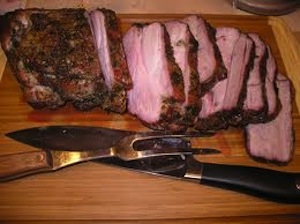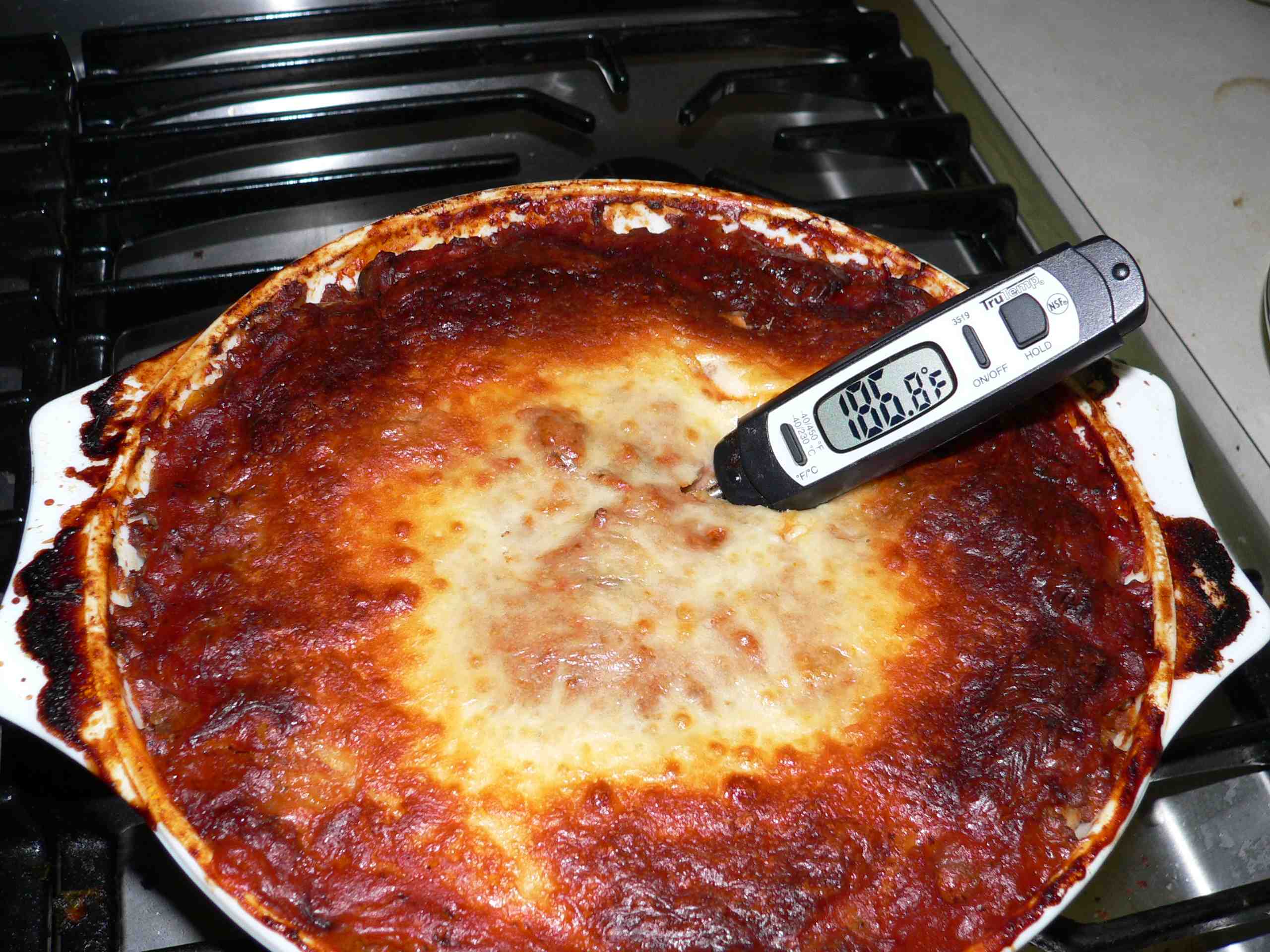For all those countries who recommend cooking meat until the juices run clear, or until it’s piping hot, what new words will be used to describe 145F pork? A little pink?
Or as Associated Press reports, “A bit of pink in pork appears to be OK after all.”
Sounds a little (food) pornographic.
And before all those food porn chefs start bragging they knew all along pink pork was safe, .jpg) provide evidence you know how to use a tip-sensitive digital thermometer and actually do it.
provide evidence you know how to use a tip-sensitive digital thermometer and actually do it.
Use a thermometer and stick it in.
Today, the U.S. Department of Agriculture is updating its recommendation for safely cooking pork, steaks, roasts, and chops. USDA recommends cooking all whole cuts of meat to 145 °F as measured with a food thermometer placed in the thickest part of the meat, then allowing the meat to rest for three minutes before carving or consuming.
This change does not apply to ground meats, including ground beef, veal, lamb, and pork, which should be cooked to 160 °F and do not require a rest time. The safe cooking temperature for all poultry products, including ground chicken and turkey, remains at 165 °F.
"With a single temperature for all whole cuts of meat and uniform 3 minute stand time, we believe it will be much easier for consumers to remember and result in safer food preparation," said Under Secretary Elisabeth Hagen. "Now there will only be 3 numbers to remember: 145 for whole meats, 160 for ground meats and 165 for all poultry."
USDA is lowering the recommended safe cooking temperature for whole cuts of pork from 160 °F to 145 °F and adding a three-minute rest time. The safe temperature for cuts of beef, veal, and lamb remains unchanged at 145 °F, but the department is adding a three-minute rest time as part of its cooking recommendations. Cooking raw pork, steaks, roasts, and chops to 145 °F with the addition of a three-minute rest time will result in a product that is both microbiologically safe and at its best quality.
A "rest time" is the amount of time the product remains at the final temperature, after it has been removed from a grill, oven, or other heat source. During the three minutes after meat is removed from the heat source, its temperature remains constant or continues to rise, which destroys pathogens. USDA’s Food Safety and Inspection Service (FSIS) has determined that it is just as safe to cook cuts of pork to 145 °F with a three minute rest time as it is to cook them to 160 °F, the  previously recommended temperature, with no rest time. The new cooking suggestions reflect the same standards that the agency uses for cooked meat products produced in federally inspected meat establishments, which rely on the rest time of three minutes to achieve safe pathogen reduction.
previously recommended temperature, with no rest time. The new cooking suggestions reflect the same standards that the agency uses for cooked meat products produced in federally inspected meat establishments, which rely on the rest time of three minutes to achieve safe pathogen reduction.
Appearance in meat is not a reliable indicator of safety or risk. Only by using a food thermometer can consumers determine if meat has reached a sufficient temperature to destroy pathogens of public health concern. Any cooked, uncured red meats – including pork – can be pink, even when the meat has reached a safe internal temperature.
 breasts, which would have been fine, except he touched the grapes and everything else that made up his salad without washing his hands after handling the raw chicken.
breasts, which would have been fine, except he touched the grapes and everything else that made up his salad without washing his hands after handling the raw chicken.
.jpg) the science right, and stick it in?
the science right, and stick it in?.jpg) could tell if food was safe to eat by its smell or appearance.
could tell if food was safe to eat by its smell or appearance..jpg) provide evidence you know how to use a tip-sensitive digital thermometer and actually do it.
provide evidence you know how to use a tip-sensitive digital thermometer and actually do it. previously recommended temperature, with no rest time. The new cooking suggestions reflect the same standards that the agency uses for cooked meat products produced in federally inspected meat establishments, which rely on the rest time of three minutes to achieve safe pathogen reduction.
previously recommended temperature, with no rest time. The new cooking suggestions reflect the same standards that the agency uses for cooked meat products produced in federally inspected meat establishments, which rely on the rest time of three minutes to achieve safe pathogen reduction..jpeg) thickest part of one piece. The meat should still be juicy, but the juices should be clear, never reddish
thickest part of one piece. The meat should still be juicy, but the juices should be clear, never reddish Smells like victory.
Smells like victory.


.jpeg) bun?
bun?

 holiday in question approaches.
holiday in question approaches.

 Judge Gail says, the center of my pork loin was pretty much completely raw.
Judge Gail says, the center of my pork loin was pretty much completely raw.